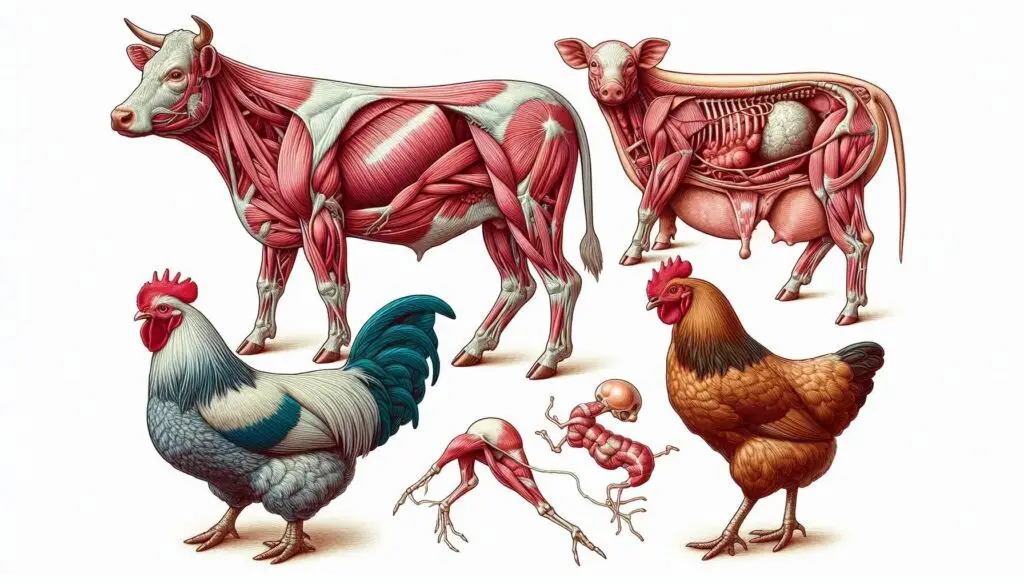Cystic Ovarian Degeneration (COD) in Cattle

Introduction to Cystic Ovarian Degeneration
Cystic Ovarian Degeneration is a condition characterized by the formation of ovarian cysts that fail to ovulate. These cysts can lead to prolonged periods of anestrus or irregular estrous cycles in affected cows. Understanding COD is crucial for dairy farmers as it affects reproductive efficiency and overall herd productivity.
Causes of Cystic Ovarian Degeneration
Hormonal Imbalances
Hormonal imbalances play a significant role in the development of COD. The failure of follicles to ovulate can be attributed to inadequate levels of luteinizing hormone (LH) and follicle-stimulating hormone (FSH). These hormones are essential for normal ovarian function. For more information on hormonal influences, check out this article on hormonal regulation .
Metabolic Stress
High-producing dairy cows are particularly susceptible to COD due to metabolic stress. Conditions such as negative energy balance during early lactation can disrupt normal hormonal signaling, leading to the development of cysts. Understanding metabolic stress is important; you can read more about it here .
Genetic Factors
Certain breeds, especially Holsteins, may have a genetic predisposition to developing COD. This predisposition can be linked to insulin resistance and other metabolic issues associated with high milk production.
Symptoms of Cystic Ovarian Degeneration
Behavioral Changes
Cows with COD often exhibit abnormal behaviors. These may include:
- Frequent Estrus: Some cows may show persistent signs of estrus behavior, including mounting other cows.
- Anestrus: Others may not exhibit any signs of heat, leading to prolonged periods without breeding opportunities.
Physical Signs
Affected cows typically display physical changes such as:
- Enlarged Ovaries: The ovaries may appear larger than normal upon examination.
- Multiple Cysts: Cysts can range from 20 mm to over 60 mm in diameter and may be present on one or both ovaries.
Diagnosis of Cystic Ovarian Degeneration
Diagnosing COD involves several steps:
Clinical Examination
Veterinarians often begin with a thorough clinical examination. This includes:
- Rectal Palpation: Identifying enlarged ovaries or cysts.
- Ultrasonography: B-mode and color Doppler ultrasound are effective tools for visualizing ovarian structures and differentiating between follicular and luteal cysts . For detailed diagnostic techniques, refer to this diagnostic guide .
Hormonal Assessment
Measuring hormone levels can aid in diagnosis. For instance:
- Progesterone Levels: Low progesterone levels may indicate the presence of follicular cysts.
Treatment Options for Cystic Ovarian Degeneration
Hormonal Treatments
Several hormonal treatments are available for managing COD:
GnRH Administration
Gonadotropin-releasing hormone (GnRH) is commonly used to stimulate ovulation in cows with follicular cysts. Research indicates that administering GnRH can effectively induce ovulation . For more insights on treatment efficacy, see this research article .
Prostaglandin F2α (PGF2α)
For luteal cysts, PGF2α is often administered to induce luteolysis. This treatment helps restore normal estrous cycles by reducing progesterone levels .
Combination Protocols
Protocols like Ovsynch combine GnRH and PGF2α for synchronized breeding. This method allows for timed artificial insemination without the need for estrus detection .
Manual Techniques
In some cases, manual rupture or aspiration of cysts may be performed under ultrasound guidance. This approach can help alleviate symptoms but carries risks such as hemorrhage .
Management Strategies for Cystic Ovarian Degeneration
Nutritional Management
Proper nutrition plays a critical role in preventing COD. Ensuring that cows receive adequate energy and nutrients during lactation can help mitigate metabolic stress.
Monitoring Reproductive Health
Regular monitoring of reproductive health is essential. This includes:
- Ultrasound Examinations: Conducting routine checks can help identify cysts early.
- Hormonal Assessments: Keeping track of hormone levels can guide treatment decisions.
Genetic Selection
Selecting breeding stock with lower susceptibility to COD can improve herd fertility over time. Genetic testing may assist farmers in making informed breeding decisions.
Recent Research on Cystic Ovarian Degeneration
Recent studies have explored various aspects of COD management:
- Treatment Efficacy: Research comparing the effectiveness of different hormonal treatments has shown that GnRH may lead to higher conception rates compared to PGF2α alone .
- Ultrasound Advancements: Improved diagnostic techniques using color Doppler ultrasound have enhanced the accuracy of COD diagnosis, potentially leading to better treatment outcomes .
- Metabolic Interventions: Studies suggest that addressing metabolic disorders through dietary adjustments can reduce the incidence of COD in high-producing dairy herds .
Conclusion
Cystic Ovarian Degeneration remains a significant challenge in dairy cattle management. By understanding its causes, symptoms, diagnosis, and treatment options, dairy farmers can take proactive steps to improve reproductive health within their herds. Implementing effective management strategies will not only enhance productivity but also contribute to the overall well-being of the animals.
More from Animal Reproduction:
https://wiseias.com/repeat-breeder-cow-syndrome/
https://wiseias.com/anoestrus-in-dairy-cows-causes-effects-and-management/
https://wiseias.com/gynaecological-disorders-livestock-infertility/





Responses